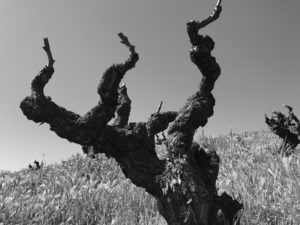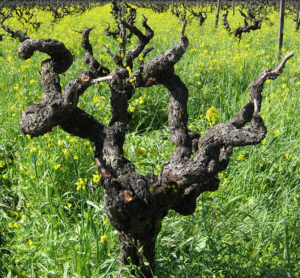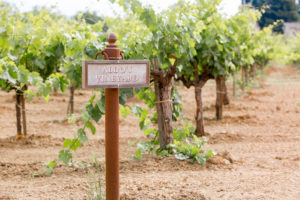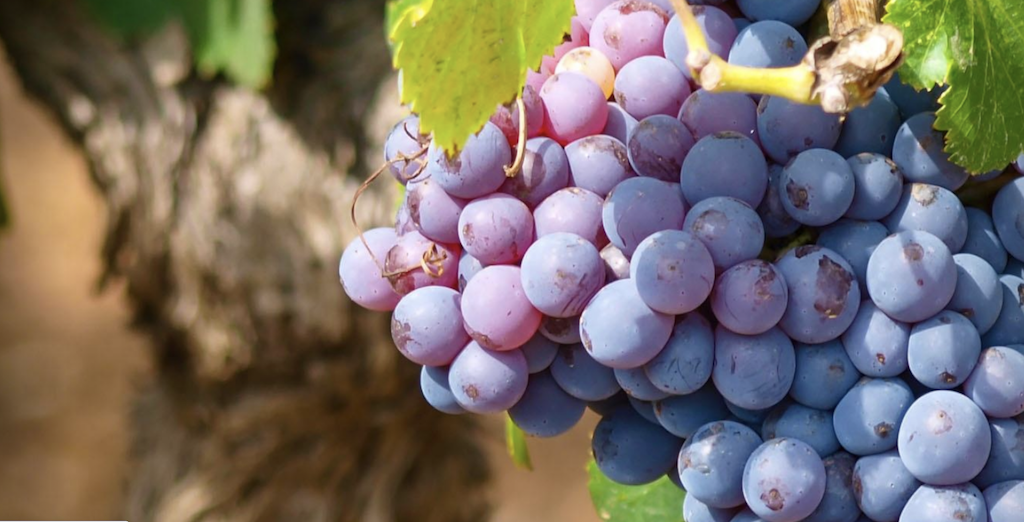 1885. Grover Cleveland was sworn in for his first term as president of the United States, the Washington Monument was dedicated, the Statue of Liberty arrived in New York harbor, and the first Zinfandel vines were planted on steep, rocky limestone slopes in what is now known as the Ueberroth Vineyard in Paso Robles.
1885. Grover Cleveland was sworn in for his first term as president of the United States, the Washington Monument was dedicated, the Statue of Liberty arrived in New York harbor, and the first Zinfandel vines were planted on steep, rocky limestone slopes in what is now known as the Ueberroth Vineyard in Paso Robles.
Situated in western Paso Robles about nine miles from the Pacific Ocean, Ueberroth Vineyard is named for Peter Ueberroth, former commissioner of baseball, who purchased the property in the 1960s. The vineyard is still owned by the Ueberroth family today and all of the fruit from the historic Zinfandel vineyard is sourced by Turley Wine Cellars.
“We read about droughts, heat spikes and crazy weather events in the past but these vines have actually been through it all,” says Tegan Passalucqua, director of winemaking at Turley Wine Cellars, who has farmed the Ueberroth vineyard since 2002.
Passaluqua believes farming older Zinfandel vineyards organically is important for maintaining vine health and fruit quality.
While the history of who actually planted the initial vineyard in 1885 is opaque, Turley Zinfandels made from the 135-year-old vines speak loud and clear.
Passalucqua and Larry Turley, proprietor of Turley Cellars, are among a group of farmers and winegrowers fiercely dedicated to preserving these legendary Zinfandel vineyards.
Widely considered California’s heritage grape, Zinfandel vines were brought to America by immigrants from Europe in the mid 19th century. Many of the Zinfandel vines planted over a century ago are still thriving across California and used to make some of the state’s most compelling wines.
Wines made from these and other legendary Zinfandel vines are distinctive, complex and imbued with history.
Two hundred and fifty miles north of Ueberroth Vineyard, vineyard manager Brenea Royal, continues the stewardship of the legendary vines planted at Monte Rosso in Sonoma.
In 1886, a year after those initial vines were planted in western Paso Robles, business partners Emmanuel Goldstein and Benjamin Dreyfus planted the first Zinfandel vines in the red volcanic soils at Monte Rosso (meaning ‘red earth’).
Situated in the Moon Mountain District AVA on a western slope of the Mayacamas Mountains that separates Sonoma and Napa, Monte Rosso spans 575 acres with 250 acres of vineyards.
The historic site is home to 40 acres of legendary Zinfandel vines planted 690 to 1,300 feet above the valley floor.
“Perspective is important to appreciate the wine made from the Zinfandel vines here at Monte Rosso,” says Brenae Royal, who has been the steward of the vineyards at Monte Rosso for six years. “These vines have survived two world wars, prohibition and three owners; they are constantly surviving and thriving.”
 While there is no official definition of ‘old vine’ or legendary vineyards, most agree that vines over 50-years-old qualify. As vines age, they tend to self-regulate, offering lower yields but more consistent fruit quality and concentrated flavors.
While there is no official definition of ‘old vine’ or legendary vineyards, most agree that vines over 50-years-old qualify. As vines age, they tend to self-regulate, offering lower yields but more consistent fruit quality and concentrated flavors.
“To me, a legendary vineyard is one that is extraordinary and shows consistency in quality year after year,” says Tres Goetting, winemaker at Napa-based Robert Biale Vineyards, who sources Zinfandel from historic vineyards like Monte Rosso and Bedrock Vineyard.
A few miles east of Monte Rosso, in the heart of Sonoma Valley, Bedrock Vineyard dates back to the Civil War era. The property was established in 1854 by Generals William ‘Tecumseh’ Sherman and Joseph ‘Fighting Joe’ Hooker. Senator George Hearst, father of publisher William Randolph Hearst, purchased the property in 1888 and replanted the vineyards, most of which exist today.
In 2005, noted winemaker Joel Peterson and his son Morgan Twain-Peterson, MW, took over stewardship of the historic property and today, the 152-acre Bedrock
Vineyard is home to some of the most historically significant Zinfandel vines in the state.
Like Monte Rosso, the vines at Bedrock Vineyard have thrived for over 45,000 sunsets and are a source for many of the state’s most highly regarded Zinfandel wines.
 Goetting and Robert Biale, owner of Robert Biale Vineyards, cultivate historic Zinfandel vines in their estate vineyards in Napa. Aldo’s Vineyard, planted by Biale’s grandfather, Pietro, eight decades ago, is the oldest in the Oak Knoll District of the Napa Valley.
Goetting and Robert Biale, owner of Robert Biale Vineyards, cultivate historic Zinfandel vines in their estate vineyards in Napa. Aldo’s Vineyard, planted by Biale’s grandfather, Pietro, eight decades ago, is the oldest in the Oak Knoll District of the Napa Valley.
“It [legendary Zinfandel vineyards] is something that is unique and stands the test of time. Like a legendary author, actor, musician or sports figure, a legendary vineyard is one that becomes famous for its proven ability to perform at the highest level leaving unforgettable impressions on those who admire.”
Each bottle of wine made from legendary Zinfandel vineyards offers a unique history and is an homage to the sweat equity of generations of farmers who have served as shepherds of these historic vines.
From the Sierra Foothills to Lodi, Paso Robles to Sonoma to Napa, thoughtful farmers remain committed to cultivating these gnarly, historic vines; preserving their history and writing the next chapter of these legendary Zinfandel vines.
About Frank Morgan
Frank Morgan founded DrinkWhatYouLike.com ten years ago to chronicle his wine experiences and share stories of wines and winegrowers. Morgan writes for The Virginian-Pilot newspaper, VA Growler Magazine, Piedmont Virginian Magazine, Dine Wine & Stein Magazine, Virginia Tourism, the wine site Snooth, and PBS. He is a regular guest on local talk radio. He is the founder of Virtual Virginia Wine Chat in 2013, a monthly virtual tasting series that connects notable Virginia winemakers and wines with wine enthusiasts and media. He lives in the Coastal Virginia region with his wife and daughter. Connect with him on Instagram: @DrinkWhatYouLike
